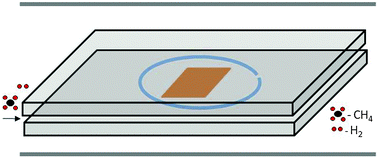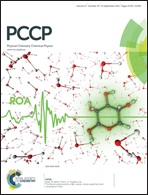Control of layer stacking in CVD graphene under quasi-static condition
Abstract
The type of layer stacking in bilayer graphene has a significant influence on its electronic properties because of the contrast nature of layer coupling. Herein, different geometries of the reaction site for the growth of bilayer graphene by the chemical vapor deposition (CVD) technique and their effects on the nature of layer stacking are investigated. Micro-Raman mapping and curve fitting analysis confirmed the type of layer stacking for the CVD grown bilayer graphene. The samples grown with sandwiched structure such as quartz/Cu foil/quartz along with a spacer, between the two quartz plates to create a sealed space, resulted in Bernal or AB stacked bilayer graphene while the sample sandwiched without a spacer produced the twisted bilayer graphene. The contrast difference in the layer stacking is a consequence of the difference in the growth mechanism associated with different geometries of the reaction site. The diffusion dominated process under quasi-static control is responsible for the growth of twisted bilayer graphene in sandwiched geometry while surface controlled growth with ample and continual supply of carbon in sandwiched geometry along with a spacer, leads to AB stacked bilayer graphene. Through this new approach, an efficient technique is presented to control the nature of layer stacking.


 Please wait while we load your content...
Please wait while we load your content...